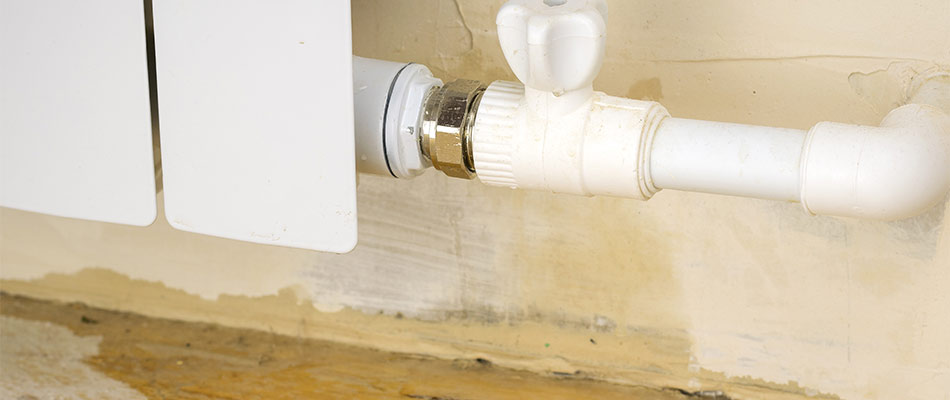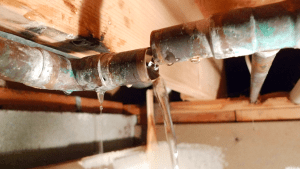They are making a few great points related to Top leak detection hacks as a whole in this article following next.

Early discovery of dripping water lines can reduce a potential catastrophe. Some little water leaks might not be visible.
1. Analyze the Water Meter
Every house has a water meter. Checking it is a proven manner in which aids you uncover leakages. For starters, switch off all the water sources. Guarantee no person will flush, make use of the faucet, shower, run the cleaning device or dishwasher. From there, most likely to the meter and watch if it will certainly change. Considering that nobody is utilizing it, there should be no motions. That shows a fast-moving leak if it relocates. Furthermore, if you discover no changes, wait a hr or 2 and inspect back once again. This implies you may have a sluggish leakage that might also be below ground.
2. Check Water Intake
If you spot sudden modifications, regardless of your consumption being the exact same, it indicates that you have leakages in your plumbing system. A sudden spike in your bill suggests a fast-moving leakage.
At the same time, a steady boost each month, despite having the very same behaviors, reveals you have a slow leakage that's additionally gradually rising. Call a plumber to extensively check your residential property, particularly if you feel a cozy location on your flooring with piping beneath.
3. Do a Food Coloring Test
When it comes to water usage, 30% comes from commodes. If the color somehow infiltrates your dish throughout that time without flushing, there's a leak in between the container and bowl.
4. Asses Outside Lines
Do not fail to remember to examine your exterior water lines too. Test spigots by connecting a garden pipe. Must water permeate out of the link, you have a loosened rubber gasket. Replace this and ensure all connections are tight. If you've got a lawn sprinkler, it will assist get it skillfully took a look at as well as preserved yearly. One little leakage can squander tons of water and also surge your water bill.
5. Analyze the circumstance and also examine
Home owners ought to make it a routine to inspect under the sink counters and also even inside cupboards for any kind of bad odor or mold growth. These 2 red flags suggest a leak so prompt focus is needed. Doing routine inspections, also bi-annually, can conserve you from a significant issue.
If you recognize your residence is currently old, maintain a careful eye on your heating systems, hoses, pipes etc. Check for stainings and also damaging as many appliances and also pipelines have a life span. They will certainly likewise naturally weaken because of tear and put on. If you think leaking water lines in your plumbing system, do not wait on it to escalate. Call a professional plumber immediately so you don't wind up with a horrible mess in your house.
Early discovery of dripping water lines can mitigate a prospective catastrophe. Some little water leakages may not be visible. Inspecting it is a guaranteed means that aids you uncover leaks. One small leak can lose heaps of water and also increase your water costs.
If you believe dripping water lines in your plumbing system, do not wait for it to rise.
WARNING SIGNS OF WATER LEAKAGE BEHIND THE WALL
PERSISTENT MUSTY ODORS
As water slowly drips from a leaky pipe inside the wall, flooring and sheetrock stay damp and develop an odor similar to wet cardboard. It generates a musty smell that can help you find hidden leaks.
MOLD IN UNUSUAL AREAS
Mold usually grows in wet areas like kitchens, baths and laundry rooms. If you spot the stuff on walls or baseboards in other rooms of the house, it’s a good indicator of undetected water leaks.
STAINS THAT GROW
When mold thrives around a leaky pipe, it sometimes takes hold on the inside surface of the affected wall. A growing stain on otherwise clean sheetrock is often your sign of a hidden plumbing problem.
PEELING OR BUBBLING WALLPAPER / PAINT
This clue is easy to miss in rooms that don’t get much use. When you see wallpaper separating along seams or paint bubbling or flaking off the wall, blame sheetrock that stays wet because of an undetected leak.
BUCKLED CEILINGS AND STAINED FLOORS
If ceilings or floors in bathrooms, kitchens or laundry areas develop structural problems, don’t rule out constant damp inside the walls. Wet sheetrock can affect adjacent framing, flooring and ceilings.
https://www.servicemasterbyzaba.com/blog/how-to-detect-water-leakage-in-walls/

I was shown that write-up on Leaking water lines through someone on a different web blog. For those who enjoyed reading our post kindly don't forget to pass it around. Thanks so much for going through it.